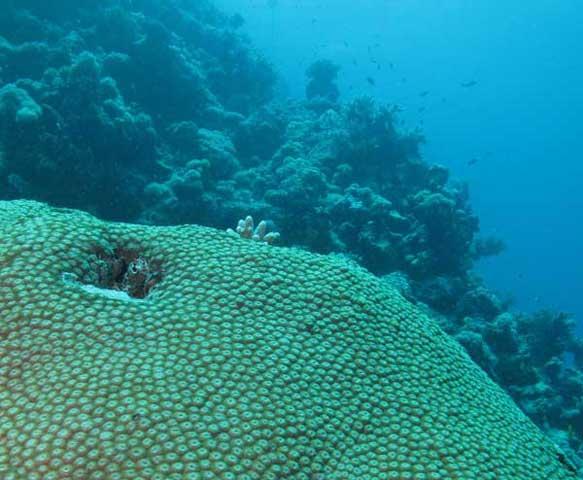3-D Imaging of Coral Leads to Dire Predictions


Sophisticated medical technology has been repurposed to take a closer look at a crucial variety of Red Sea coral, in hopes of determining the culprit behind the species' decline over the last decade.
The findings are alarming, and point to global warming as the reason the coral could stop growing in the Red Sea within 60 years.
Scientists at the Woods Hole Oceanographic Institution in Massachusetts placed specimens of Diploastrea heliopora, an important reef-building species of coral, into a CT scanner, a machine capable of making what is essentially a 3-D image of both hard and soft tissue in human patients. The resulting pictures allowed investigators to look at cross-sections of the coral without damaging its structure.
"We could not have used conventional techniques on this coral," said Woods Hole's Anne L. Cohen, one of the lead researchers. "The skeletal architecture is too complicated."
Cohen, along with Neal E. Cantin, a Woods Hole postdoctoral investigator and co-lead researcher on the project, said it was important to look at D. heliopora's inner workings because the coral , which forms dome-shaped colonies, looked fine.
Yet growth rates of the Red Sea's D. heliopora population have dropped 30 percent in 10 years.
"The corals look healthy, but looking inside at the skeleton gives you an idea of things to come," Cohen said. "It's like osteoporosis. You look at a person and, on the outside, everything seems fine, but inside there are signs of trouble."
Get the world’s most fascinating discoveries delivered straight to your inbox.
A coral's skeletal structure provides a record of the organism's growth over time. Much as the rings of a tree can reveal secrets of past climate effects, lines in a coral's skeleton tell the story of the species' health over the years. The Woods Hole researchers found a correlation between increasing temperatures and stress in D. heliopora's structure.
"The warming in the Red Sea and the resultant decline in the health of this coral is a clear regional impact of global warming," said Cantin. Surface water temperatures in the region in the last decade are about 3 degrees Fahrenheit (1.5 degrees Celsius) higher than in the 1980s, a phenomenon that researchers say cannot be attributed to natural fluctuations in climate.
"The CT scans reveal that these corals have actually been under chronic stress for the last 10 years," Cohen said. The scientists' report, detailed in the July 16 issue of the journal Science, warned that if current trends continued, the Red Sea's D. heliopora could be gone by 2070.



